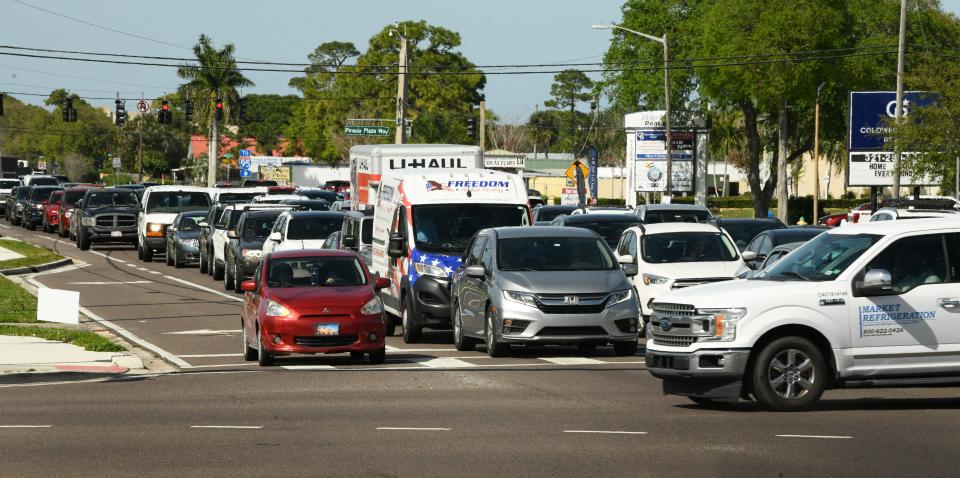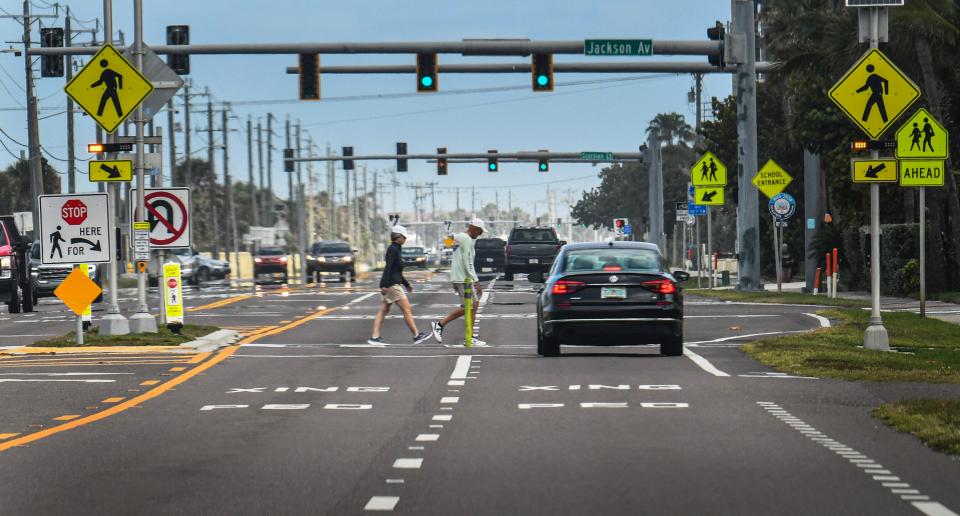Driving in Brevard has gotten dangerous. Here's what we can do about it | John Torres
It's been 23 years since I moved from the Hudson Valley in New York to the beaches of Brevard County.
And at the risk of sounding like an old curmudgeon waxing nostalgic about how things were so much better in the "old days," I can't help but notice how much things have changed every time I get in my car. I often joke with my family that the turn from State Road A1A into my sleepy beachside neighborhood is the nexus of the universe.
Why? Well, there always seems to be a pedestrian crossing the street just as I am going to turn. If it's not a pedestrian, then it's a skateboarder or a bicyclist or a stopped school bus, maybe a motorized scooter or an e-bike or a family pulling a cart full of beach supplies. Complicating matters is one of those (fairly new) lit-up crosswalks a few yards away.
Twenty years ago there were no e-bikes, motorized scooters, lit-up crosswalks, high-speed passenger trains or traffic circles in Brevard. There was also much less traffic on our roads. Don't get me wrong, I think growth is good and I'm excited to see what the next 20 years bring. But there is no doubt that travelling throughout the Space Coast has gotten more difficult and dangerous.

The drive from my home in the Indialantic area to my mother's place in Cape Canaveral used to take 30 minutes. These days I consider it a victory when I can make the drive in less than 45 minutes.
It takes longer to get everywhere.
It also seems we can't go a week without reporting on either a person or car struck by a train, a fatal motorcycle crash or incident of road rage. There were a few weeks earlier this year where two cars and a pedestrian were hit by trains. By the time I sat down to work on this story, six people in Brevard County had been killed by a Brightline train. Those killed either tried driving around the crossing gate or were struck while walking on the tracks.
Here's the statistic that stopped us in our tracks: Nearly 3,000 people died or were seriously injured in crashes over 5 years.
Let's repeat that because it's a shocking statistic. From 2018-2022, 2,744 people in Brevard were either killed or seriously injured in crashes on the Space Coast. That's roughly the number of passengers that sail from Port Canaveral on one of our cruise ships.
Those numbers prompted us here at FLORIDA TODAY to take a long, hard look at transportation safety here in Brevard County. We started out by reaching out to the Space Coast Transportation Planning Organization (SCTPO), and they had a lot to say that informs this project.
This week you'll read about upcoming road projects, updated rules of the road, how to navigate crosswalks with flags and others with lights as well as traffic circles. I had never even heard of a diverging diamond until we started working on this project — though I remember driving on it recently in Viera and not quite understanding the logic right away.
You'll also learn what the most dangerous intersections are for cars and pedestrians and alternate routes to take to avoid the congestion. You'll even read tips on how to deal with road rage and aggressive drivers.
Many accidents can be avoided with caution

Why is this important? Well ... we've come to accept death on our roads far too easily. No one should be dying on our roads. Every day this week, we'll have stories, photos, videos and tips on how to maneuver the increasingly-busy roads of Brevard County.
But the main takeaway we hope is that just about all these "accidents" are not accidents but rather the unfortunate result of poor habits on the road.
Accidents is a word the TPO would like to ban from our language when it comes to traffic crashes. I decided to do a little anecdotal research of my own recently and spent some time last month walking along SR A1A and was dumbfounded at how many drivers were looking at their cell phones while they drove. What did we do before cell phones?
But that's not all. I saw families — babies in tow — literally running across the busy road to avoid getting hit, despite crosswalks only yards away. I saw cyclists zooming down sidewalks and not bothering to even pause at intersections to see if cars were turning. You wouldn't cross the street without looking if you were walking? Why is it OK on a bike?
Shouldn't we be driving, walking, cycling, etc., like our lives depended on it?

But the craziest thing I saw was an adult woman driving a modified version of one of those electric cars made for children, on a sidewalk. She was going way faster than those toys are built for. Yeah, I'm still shaking my head.
Truth is, we can all probably do a little better while travelling throughout the Space Coast. We can all work harder to obey traffic laws, respect others sharing the roadways and pay attention to the task that leads to our collective ultimate goal — getting somewhere safely.
Contact Torres at jtorres@floridatoday.com. You can follow him on X, the platform formerly known as Twitter @johnalbertorres. You can also find updates about the Murder on the Space Coast Podcast on our Facebook page.
This article originally appeared on Florida Today: Traffic safety on Florida Space Coast: Act like our lives depend on it

